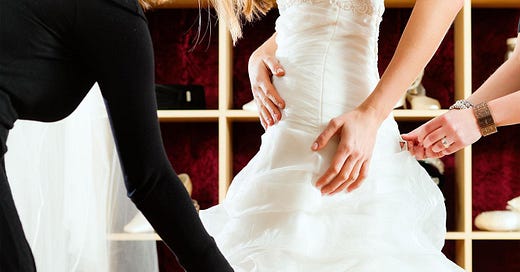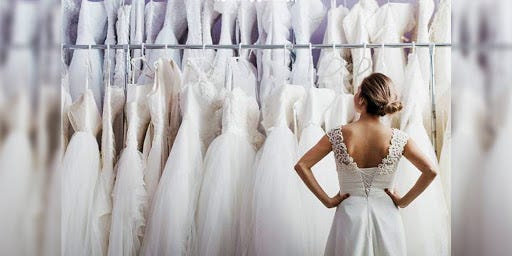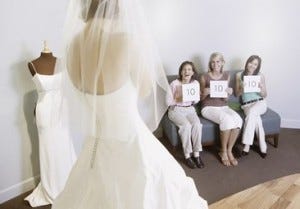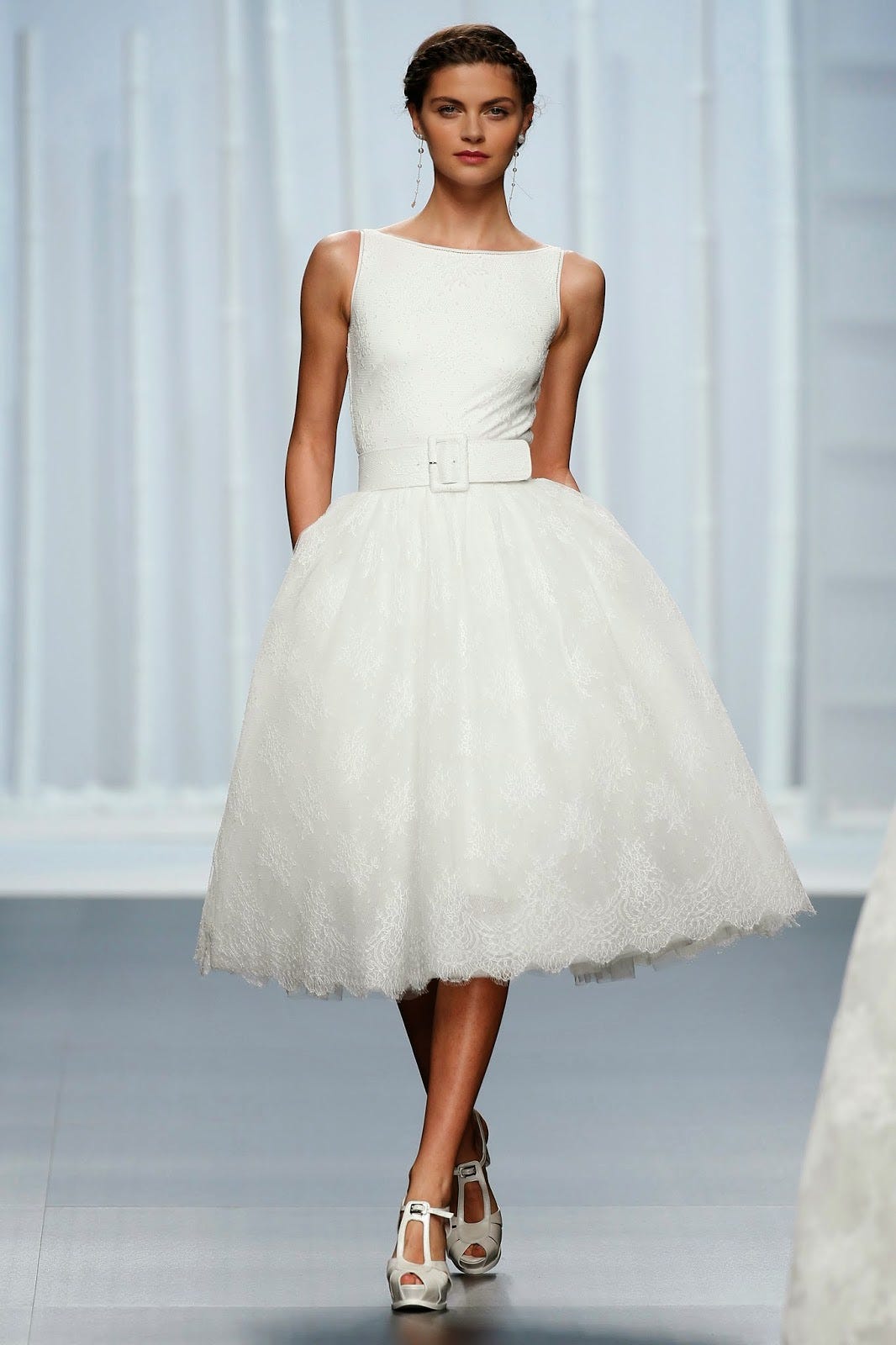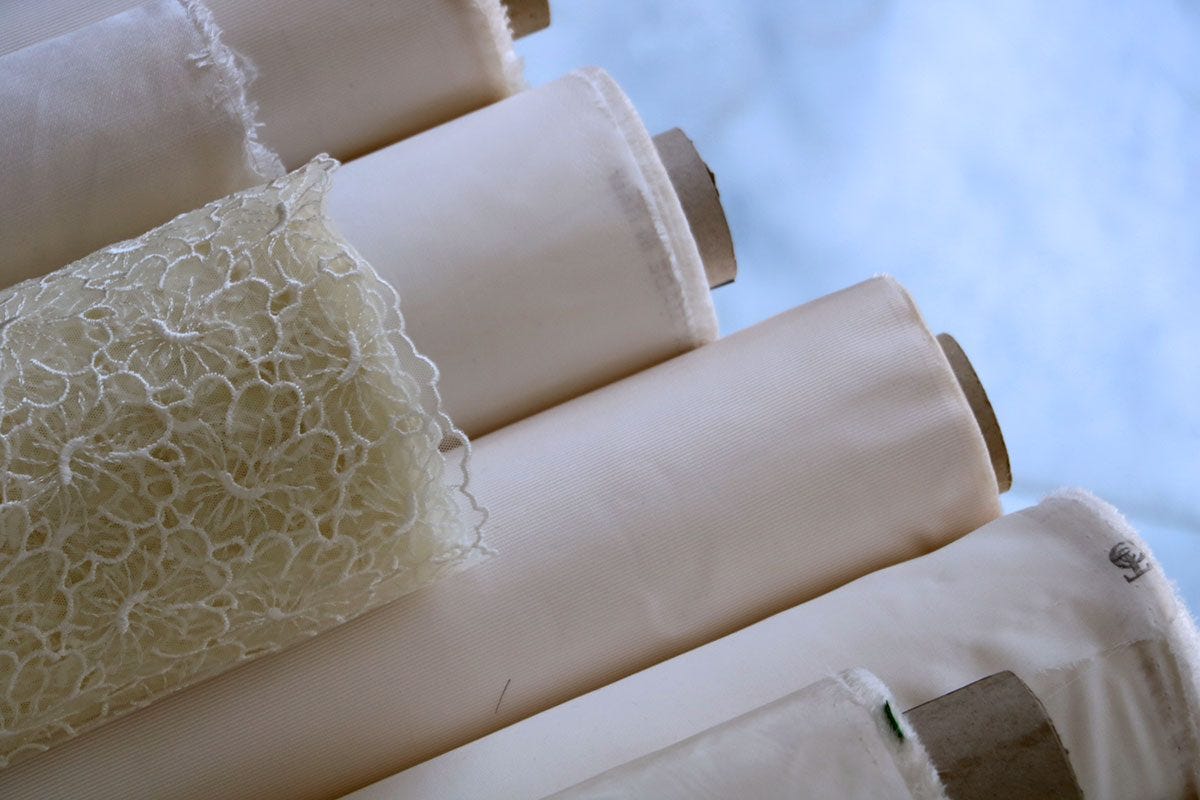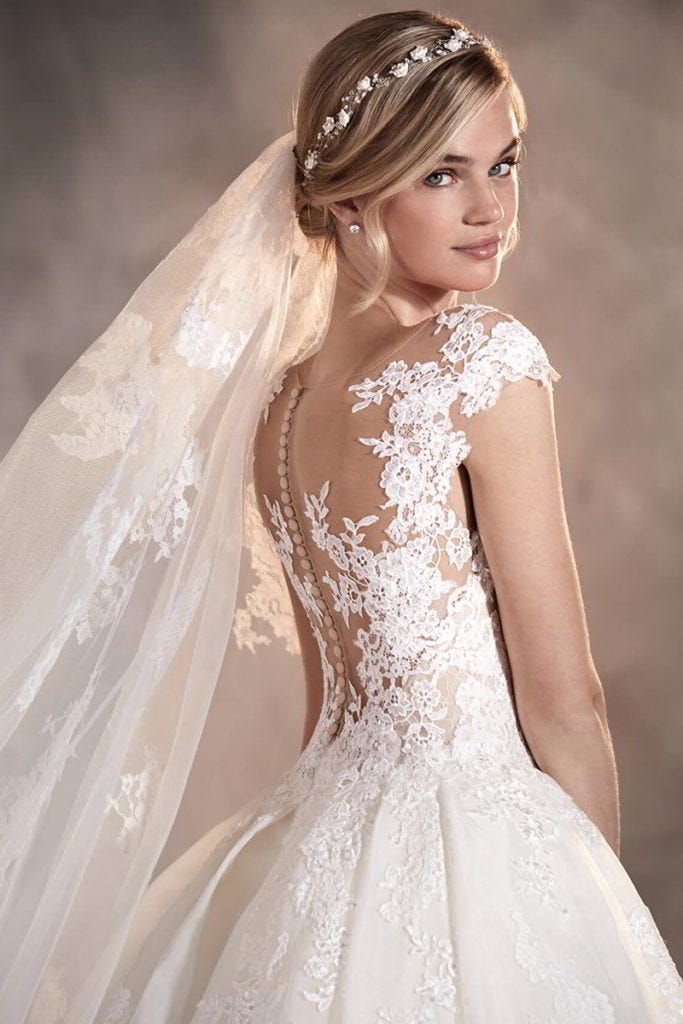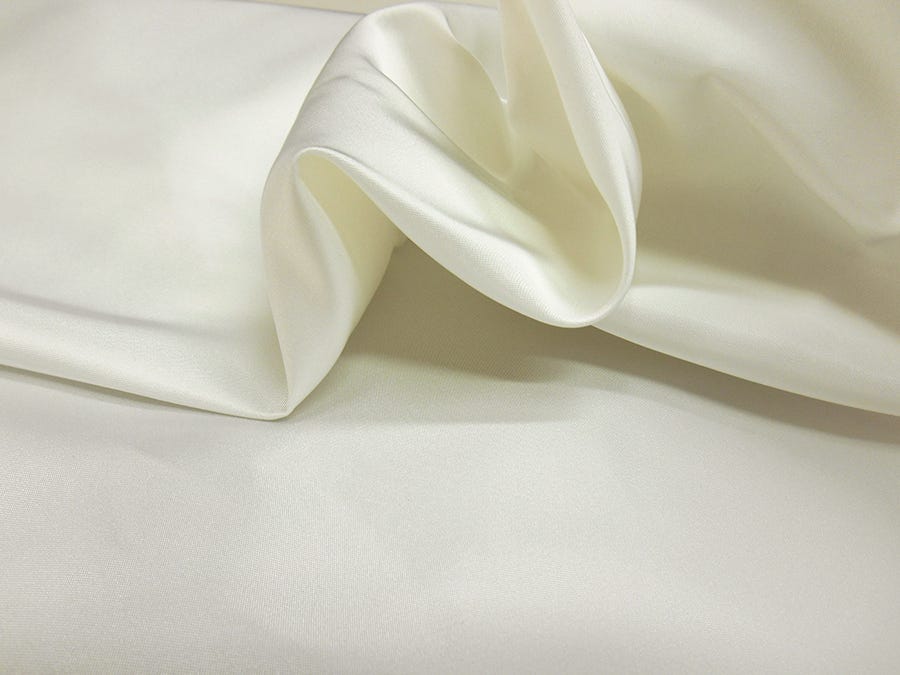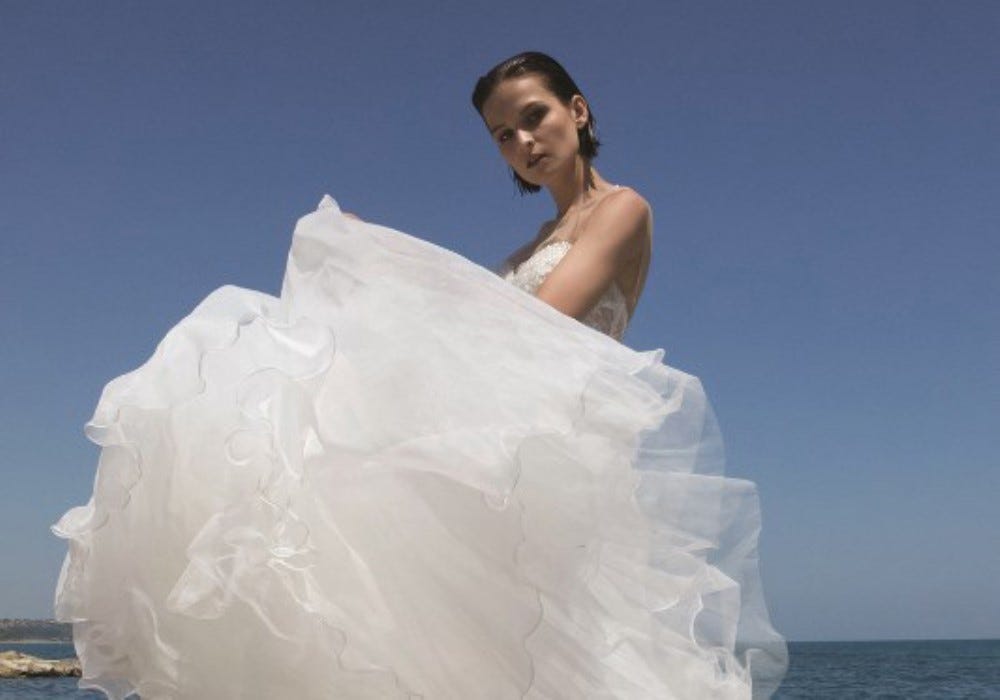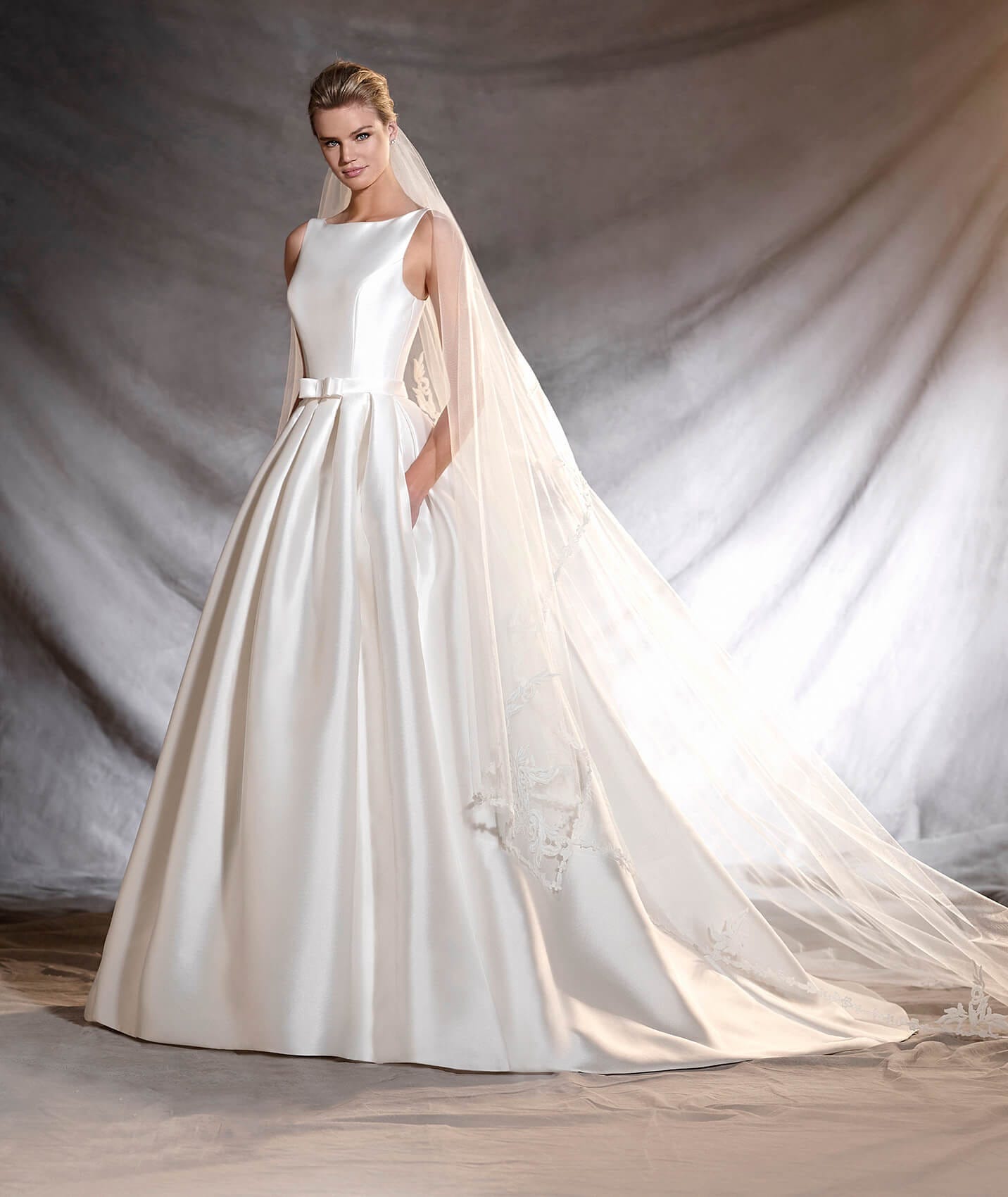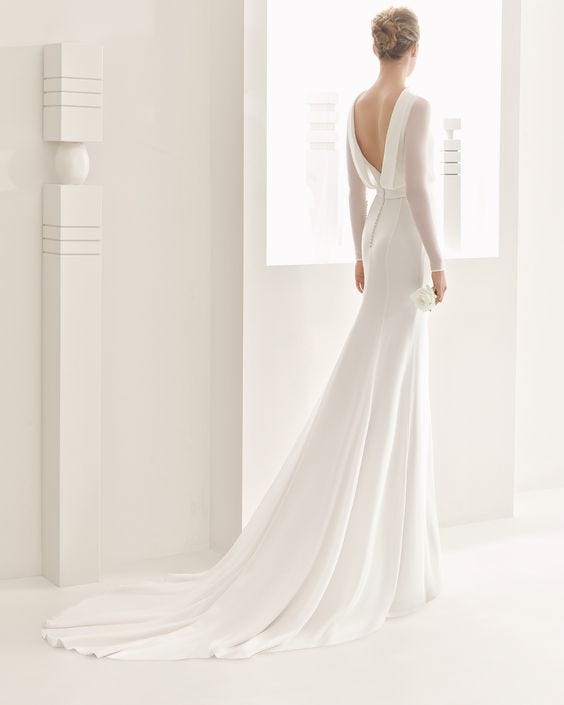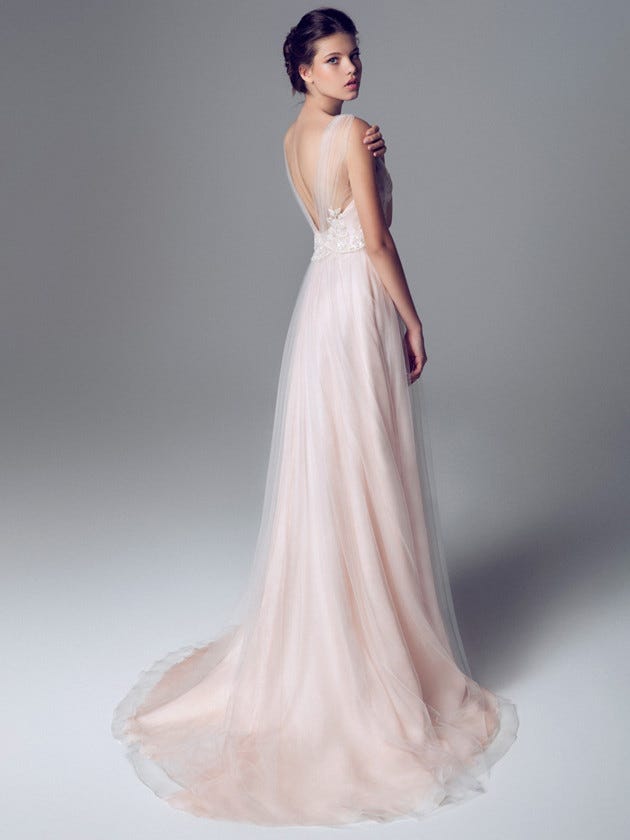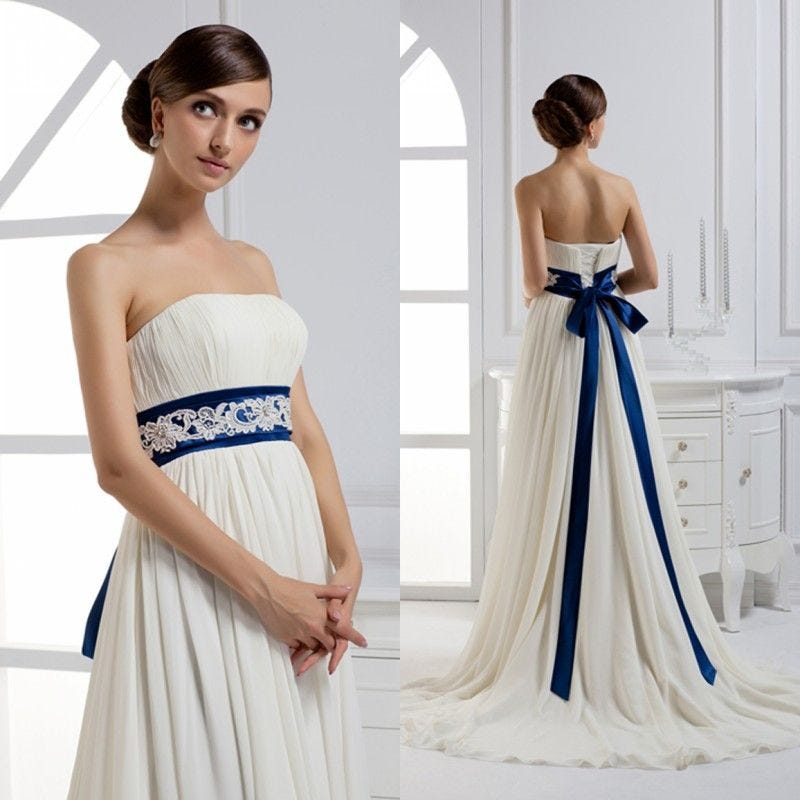Two Sundays have been dedicated to the groom, three if you include some more general indications in the introduction. But for the bride, I will have to limit myself to today because more than real rules, below I will list only a few tips and suggestions.
In reality, the rules for choosing a dress are just a handful. The rest is all common sense.
Therefore:
the veil is necessary only for religious ceremonies, while it is advisable not to wear it for weddings at City Hall or in places of worship that do not require it;
gloves must be of a length that goes above the elbow, in case of a very low-cut dress;
it is necessary to have the shoulders covered: while avoiding the coat (that does not suit the whole), in case of a sleeveless dress it will be necessary to wear a stole.
For the rest, my invitation is to keep the above in mind and to carry out a self-critical examination to understand where your body type allows you to lean toward.
This does not mean that only the very tall and skinny will be able to afford to wear certain dream dresses, and that the rest of the world will have to be content with choosing among dresses with a less fairytale-like allure. Instead, it means that after understanding what it really is best for your silhouette, you can make sensible choices. Then, within the major macro areas, we really need to start trying and trying and trying.
The major macro-areas, in my opinion, are essentially two: long dresses and short dresses.
Leaning toward the former or latter is not only o function of your body but also of the type of ceremony you intend to do, as well as the age of the bride.
A bride who is already over forty and wishes to have a "simple" ceremony will choose the area of short dresses. This statement, however, should be taken with a grain of salt, as it is not at all true that the short dress would only be suitable for a ceremony that might be interpreted as undertone, and that the long dress makes the wedding important. There are many factors that complete the choice but let's say that the bride will have to determine, in the most rational way possible, whether she really wants a long or a short dress.
I remember that a million years ago, when I had to make this choice, I wanted the short dress at all costs.
My mother, who accompanied me to the atelier we had chosen (actually, my grandmother was with us too!), let me start trying on a dress in the short category first. I loved it. I liked it so much that, to me, I was already done; I had found the one.
But she urged me to try on long dresses as well, just to please her. So, after the short one, I tried a longuette and then two long ones. I chose the last one, to my great surprise.
Especially as everyone, absolutely everyone, at the atelier, told me that an important ceremony, as the one I was organizing, would not allow a short dress! Maybe they were right, and I let them convince me. But the doubt stayed always with me...
Having said that, I would like to urge you to choose freely, but listen to some advice, you never know. But more than those of a general nature, listen to advices about what is really good for you, what will make you look your best on that day.
Some knowledge about fabrics, however, is good to have.
Lace:
it begins to be widespread in Venice in 1500. It is something refined and precious, an artisanal product that can be used to make a whole wedding dress or be inserted to embellish. A lace dress, or with lace inserts, immediately gives the idea of an important and very romantic dress. It shall be chosen by the bride who is planning a sumptuous wedding.
Silk:
it is bright and luminous; depending on the weight and process, it can be used for a variery of clothes. Silk, meant as a natural fiber, is the so-called starting point for many other types of yarns such as tulle, mikado, satin, organza and chiffon.
Tulle:
It is one of the bridal fabrics par excellence. Made of silk threads that are intertwined to create a fine and transparent net, it is mainly used for the bridal veil. Additionally, to obtain the volume effect in the skirt part of the dress, often tulle petticoats are created.
Mikado:
coming from Japan, it is a silk fabric that is thick and compact and allows you to play with shapes and volumes with an architectural structure. It is a very precious fabric, with an ethereal brightness: important folds and workmanship give the dress made of Mikado an aristocratic allure.
Satin:
shine and fluidity are the two main characteristics of this type of silk fabric and, for this reason, it is mainly used for slipped dresses. Depending on the type of processing, satin can be even more structured, so that we would then have the precious duchesse, shantung and taffeta.
Organza:
Once again we start from silk to obtain this type of fabric with a slight transparency. Similar to chiffon, Organza has delicate perlage nuances and a little more structured volume. Therefore, it is chosen to make voluminous dresses embellished with light reflections.
Chiffon:
it can be obtained from different yarns but the one made with silk is the most valuable. Thanks to its transparency and slight delicacy, it is widely used as a substitute for tulle, and is indicated for those brides who love sobriety and long dresses with flowing and slightly ruffled shapes.
Finally, the color.
It is white and this is well known, even though in ancient times the color of the wedding was red! But white identifies purity and wants to emphasize the union of the nuptial bond. More and more often, however, we see brides who also wear other colors. Choose according to your complexion and hair color. With a pale complexion tending to yellow, a blonde bride does not look her best in an ivory dress! For her, white will be the best choice because it will brighten her. Instead, an olive or amber complexion will look great with ivory, white and even some pastels. You may remember that I talked about tanning some time ago. Remember that the bride should also wear "something light blue" by tradition, so why not think of a nice light blue satin sash to emphasize the waist? Think about it ...
Today's topic will be enriched later on with some other notion which, however, no longer concerns the dress but something that completes it, such as gloves, hairstyle, veil, makeup, shoes, jewelry, traditions.
Until next Sunday.

